Engineering Geology
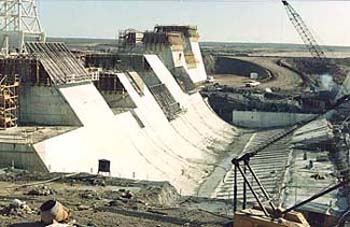 Your life has benefited because an engineering geologist took an active part in projects that improved your health, safety, and standard of living. Just consider the lifestyle you live. If you live in a city, your drinking water is taken for granted, but an engineering geologist helped get it to your home. How? By working to identify a safe site for the dam that holds back the reservoir. By working to locate and construct the tunnels and pipelines needed to carry the water into the city safely and without contamination. By ensuring the distribution system is not compromised by unstable ground, faults or corrosive soil conditions in the many miles of trenches used to lay the pipe. Your life has benefited because an engineering geologist took an active part in projects that improved your health, safety, and standard of living. Just consider the lifestyle you live. If you live in a city, your drinking water is taken for granted, but an engineering geologist helped get it to your home. How? By working to identify a safe site for the dam that holds back the reservoir. By working to locate and construct the tunnels and pipelines needed to carry the water into the city safely and without contamination. By ensuring the distribution system is not compromised by unstable ground, faults or corrosive soil conditions in the many miles of trenches used to lay the pipe.


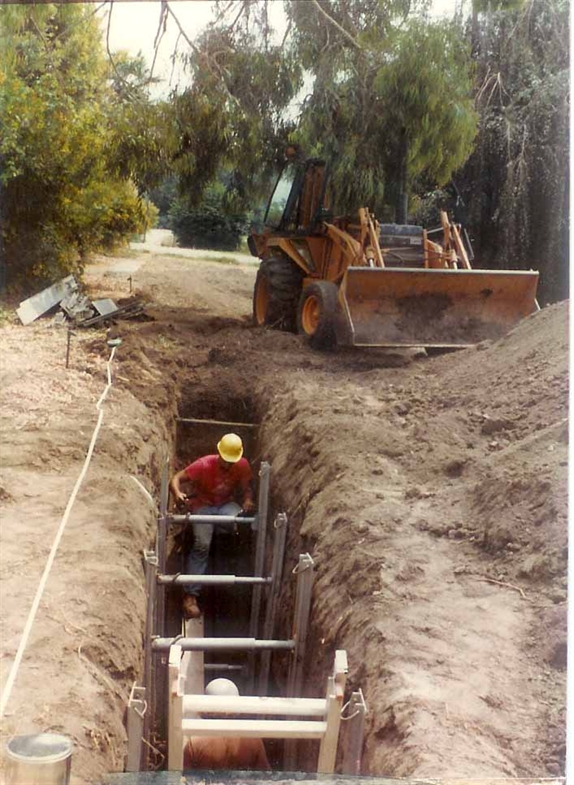 You switch on your lights and....voila….lights! Ever wonder how engineering geology helped get the electricity to your home? Siting of critical facilities like power plants is a major contribution of engineering geologists. The plants need a stable foundation, protection from floods, active fault movement, and volcanic activity that is near sources of cooling water and fuel delivery systems. If the site is for a nuclear reactor it must meet an additional set of requirements that include estimating the size of earthquakes that require a safe shutdown of the plant. If the generating plant is hydroelectric, the engineering geologist is involved in deciding where the dam can be safely and effectively constructed and determining the geological conditions that have to be considered in the design and construction. Tunnels and spillways add to the details addressed by the geologist. Even the foundations needed for the transmission lines require the attention of an engineering geologist. And you thought flipping the switch was easy! You switch on your lights and....voila….lights! Ever wonder how engineering geology helped get the electricity to your home? Siting of critical facilities like power plants is a major contribution of engineering geologists. The plants need a stable foundation, protection from floods, active fault movement, and volcanic activity that is near sources of cooling water and fuel delivery systems. If the site is for a nuclear reactor it must meet an additional set of requirements that include estimating the size of earthquakes that require a safe shutdown of the plant. If the generating plant is hydroelectric, the engineering geologist is involved in deciding where the dam can be safely and effectively constructed and determining the geological conditions that have to be considered in the design and construction. Tunnels and spillways add to the details addressed by the geologist. Even the foundations needed for the transmission lines require the attention of an engineering geologist. And you thought flipping the switch was easy!
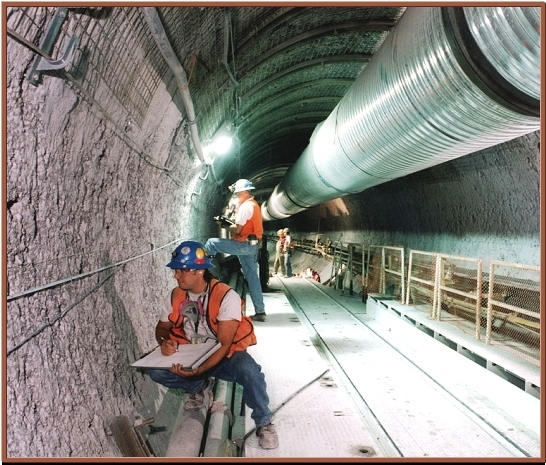   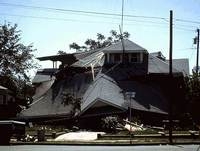 Ever wonder if the high-rise building you live or work in will fall over in a big earthquake? The geology beneath high-rise buildings controls the safe design of the foundation and the structure. The engineering geologist investigates the geologic conditions, not only under the building but in the surrounding area. How have earthquakes affected the area in the past? Which active faults in the region are most likely to affect the building? This information is critical for safety and structural integrity of high-rises for surviving the next “big one." Ever wonder if the high-rise building you live or work in will fall over in a big earthquake? The geology beneath high-rise buildings controls the safe design of the foundation and the structure. The engineering geologist investigates the geologic conditions, not only under the building but in the surrounding area. How have earthquakes affected the area in the past? Which active faults in the region are most likely to affect the building? This information is critical for safety and structural integrity of high-rises for surviving the next “big one."
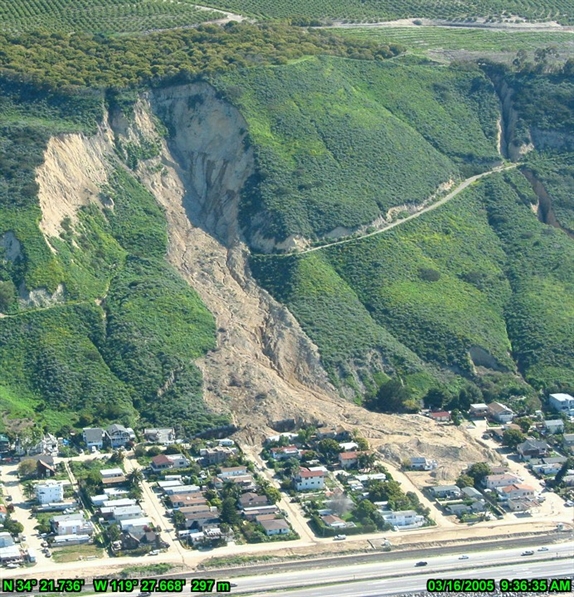  Why do landslides occur and how can they be stopped? Sometimes they can’t be prevented, but engineering geologists recognize where landslides are most likely to occur or have moved in the past. Using innovation and sound science, engineering geologists are instrumental in defining ways to halt landslide movement and prevent catastrophic damage. Follow this link to a case study that features two landslides and shows how human activity can cause landslides and how important a knowledgeable engineering geologist is to the identification of landslides. AEG has a special technical committee for landslide studies. A major international meeting on landslides co-sponsored by AEG was held in Vail, Colorado in June 2007. Why do landslides occur and how can they be stopped? Sometimes they can’t be prevented, but engineering geologists recognize where landslides are most likely to occur or have moved in the past. Using innovation and sound science, engineering geologists are instrumental in defining ways to halt landslide movement and prevent catastrophic damage. Follow this link to a case study that features two landslides and shows how human activity can cause landslides and how important a knowledgeable engineering geologist is to the identification of landslides. AEG has a special technical committee for landslide studies. A major international meeting on landslides co-sponsored by AEG was held in Vail, Colorado in June 2007.
.jpg) 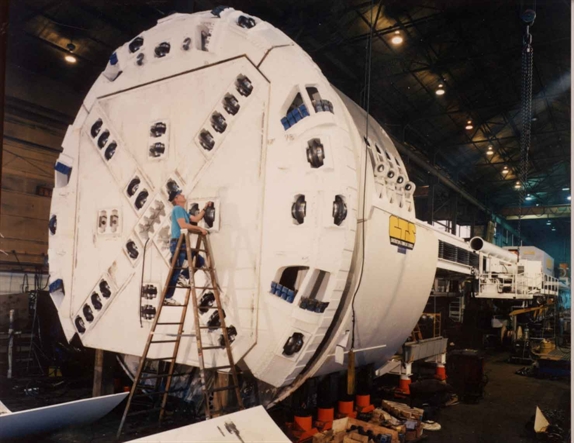 Who knows what problems lurk in the path of a subway tunnel? The engineering geologist does! Every city in the world with a subway system has encountered unique sets of geologic conditions that had to be dealt with in construction. Engineering geologists provide critical information on soil, rock and groundwater conditions from surface and subsurface investigations to help constrain how, where, and how much it will cost to tunnel beneath your favorite city. AEG has a technical committee on tunnels to provide up-to-date technology. Who knows what problems lurk in the path of a subway tunnel? The engineering geologist does! Every city in the world with a subway system has encountered unique sets of geologic conditions that had to be dealt with in construction. Engineering geologists provide critical information on soil, rock and groundwater conditions from surface and subsurface investigations to help constrain how, where, and how much it will cost to tunnel beneath your favorite city. AEG has a technical committee on tunnels to provide up-to-date technology.
 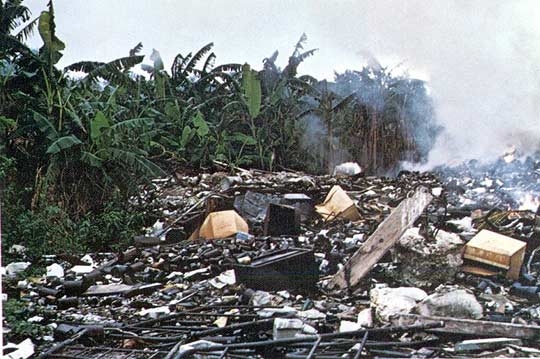 Consider the lowly trash can….there it stands on the sidewalk, waiting for…what? Where does your trash go? Whether it goes to a compactor, an incinerator, or a landfill, you can bet that an engineering geologist was involved in making sure the site is safe for its intended use. Waste disposal facilities are critical to our standard of living so we can get rid of our trash and not jeopardize our health, water supplies, and environment in the process. Site characterization of potential waste disposal sites is one of the most important jobs in which an engineering geologist gets involved. Consider the lowly trash can….there it stands on the sidewalk, waiting for…what? Where does your trash go? Whether it goes to a compactor, an incinerator, or a landfill, you can bet that an engineering geologist was involved in making sure the site is safe for its intended use. Waste disposal facilities are critical to our standard of living so we can get rid of our trash and not jeopardize our health, water supplies, and environment in the process. Site characterization of potential waste disposal sites is one of the most important jobs in which an engineering geologist gets involved.
Ever notice those signs on curvy mountain roads that say “Watch for Rock” or “Falling Rock?" Engineering geologists are working to reduce the risk associated with these signs. Unstable rock cuts and steep slopes above roadways are analyzed for rock fall potential. Stabilization measures such as rock bolting and installation of wire mesh may be recommended to reduce the risk of damaging rock falls. Other destructive highway hazards like debris flows resulting from extra heavy rains in steep country require the attention of engineering geologists too. Debris detention basins upstream of highways sometimes help to reduce the risk of debris sweeping across the roadway.
Reducing the risk associated with geologic hazards is an important part of what engineering geologists do.
The Role of AEG in Engineering Geology
AEG is devoted to developing professional responsibility on the part of environmental geologists, engineering geologists, and hydrogeologists. AEG provides technical and professional short courses, seminars, and technical meetings. AEG’s members contribute to public safety and provide public information and education through its website and member participation in their communities. AEG supports students in the fields of applied geology so that they develop strong technical backgrounds. AEG seeks to maintain high professional standards and enhance awareness of the responsibility of environmental geologists, engineering geologists, and hydrogeologists to the public in general.
|

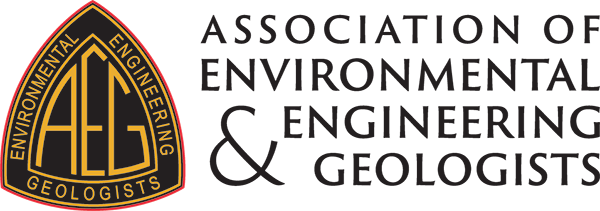
 Your life has benefited because an engineering geologist took an active part in projects that improved your health, safety, and standard of living. Just consider the lifestyle you live. If you live in a city, your drinking water is taken for granted, but an engineering geologist helped get it to your home. How? By working to identify a safe site for the dam that holds back the reservoir. By working to locate and construct the tunnels and pipelines needed to carry the water into the city safely and without contamination. By ensuring the distribution system is not compromised by unstable ground, faults or corrosive soil conditions in the many miles of trenches used to lay the pipe.
Your life has benefited because an engineering geologist took an active part in projects that improved your health, safety, and standard of living. Just consider the lifestyle you live. If you live in a city, your drinking water is taken for granted, but an engineering geologist helped get it to your home. How? By working to identify a safe site for the dam that holds back the reservoir. By working to locate and construct the tunnels and pipelines needed to carry the water into the city safely and without contamination. By ensuring the distribution system is not compromised by unstable ground, faults or corrosive soil conditions in the many miles of trenches used to lay the pipe.
 You switch on your lights and....voila….lights! Ever wonder how engineering geology helped get the electricity to your home? Siting of critical facilities like power plants is a major contribution of engineering geologists. The plants need a stable foundation, protection from floods, active fault movement, and volcanic activity that is near sources of cooling water and fuel delivery systems. If the site is for a nuclear reactor it must meet an additional set of requirements that include estimating the size of earthquakes that require a safe shutdown of the plant. If the generating plant is hydroelectric, the engineering geologist is involved in deciding where the dam can be safely and effectively constructed and determining the geological conditions that have to be considered in the design and construction. Tunnels and spillways add to the details addressed by the geologist. Even the foundations needed for the transmission lines require the attention of an engineering geologist. And you thought flipping the switch was easy!
You switch on your lights and....voila….lights! Ever wonder how engineering geology helped get the electricity to your home? Siting of critical facilities like power plants is a major contribution of engineering geologists. The plants need a stable foundation, protection from floods, active fault movement, and volcanic activity that is near sources of cooling water and fuel delivery systems. If the site is for a nuclear reactor it must meet an additional set of requirements that include estimating the size of earthquakes that require a safe shutdown of the plant. If the generating plant is hydroelectric, the engineering geologist is involved in deciding where the dam can be safely and effectively constructed and determining the geological conditions that have to be considered in the design and construction. Tunnels and spillways add to the details addressed by the geologist. Even the foundations needed for the transmission lines require the attention of an engineering geologist. And you thought flipping the switch was easy!




 Why do landslides occur and how can they be stopped? Sometimes they can’t be prevented, but engineering geologists recognize where landslides are most likely to occur or have moved in the past. Using innovation and sound science, engineering geologists are instrumental in defining ways to halt landslide movement and prevent catastrophic damage. Follow this link to a case study that features two landslides and shows how human activity can cause landslides and how important a knowledgeable engineering geologist is to the identification of landslides. AEG has a special technical committee for landslide studies. A major international meeting on landslides co-sponsored by AEG was held in Vail, Colorado in June 2007.
Why do landslides occur and how can they be stopped? Sometimes they can’t be prevented, but engineering geologists recognize where landslides are most likely to occur or have moved in the past. Using innovation and sound science, engineering geologists are instrumental in defining ways to halt landslide movement and prevent catastrophic damage. Follow this link to a case study that features two landslides and shows how human activity can cause landslides and how important a knowledgeable engineering geologist is to the identification of landslides. AEG has a special technical committee for landslide studies. A major international meeting on landslides co-sponsored by AEG was held in Vail, Colorado in June 2007..jpg)
 Who knows what problems lurk in the path of a subway tunnel? The engineering geologist does! Every city in the world with a subway system has encountered unique sets of geologic conditions that had to be dealt with in construction. Engineering geologists provide critical information on soil, rock and groundwater conditions from surface and subsurface investigations to help constrain how, where, and how much it will cost to tunnel beneath your favorite city. AEG has a technical committee on tunnels to provide up-to-date technology.
Who knows what problems lurk in the path of a subway tunnel? The engineering geologist does! Every city in the world with a subway system has encountered unique sets of geologic conditions that had to be dealt with in construction. Engineering geologists provide critical information on soil, rock and groundwater conditions from surface and subsurface investigations to help constrain how, where, and how much it will cost to tunnel beneath your favorite city. AEG has a technical committee on tunnels to provide up-to-date technology.
 Consider the lowly trash can….there it stands on the sidewalk, waiting for…what? Where does your trash go? Whether it goes to a compactor, an incinerator, or a landfill, you can bet that an engineering geologist was involved in making sure the site is safe for its intended use. Waste disposal facilities are critical to our standard of living so we can get rid of our trash and not jeopardize our health, water supplies, and environment in the process. Site characterization of potential waste disposal sites is one of the most important jobs in which an engineering geologist gets involved.
Consider the lowly trash can….there it stands on the sidewalk, waiting for…what? Where does your trash go? Whether it goes to a compactor, an incinerator, or a landfill, you can bet that an engineering geologist was involved in making sure the site is safe for its intended use. Waste disposal facilities are critical to our standard of living so we can get rid of our trash and not jeopardize our health, water supplies, and environment in the process. Site characterization of potential waste disposal sites is one of the most important jobs in which an engineering geologist gets involved.